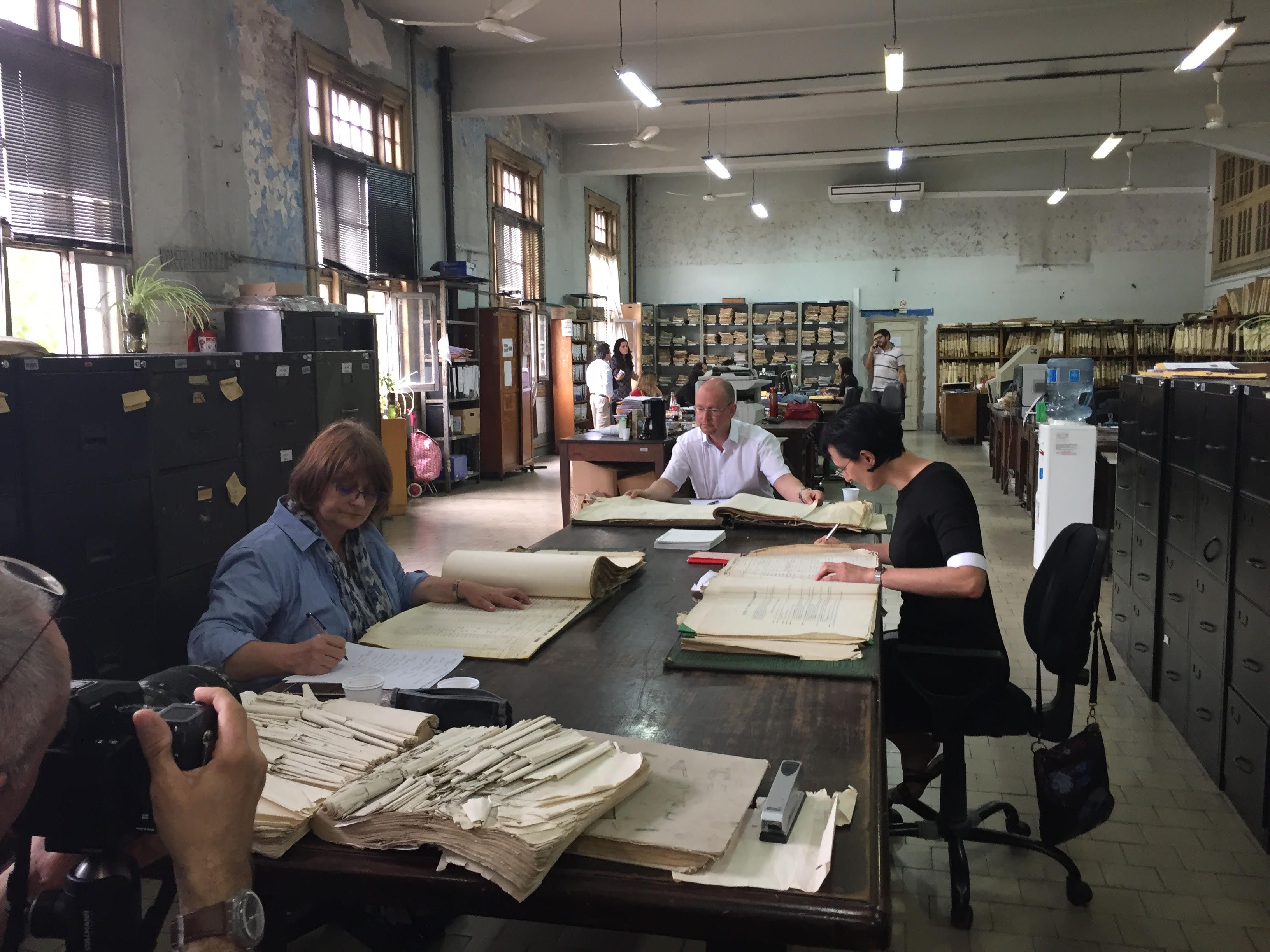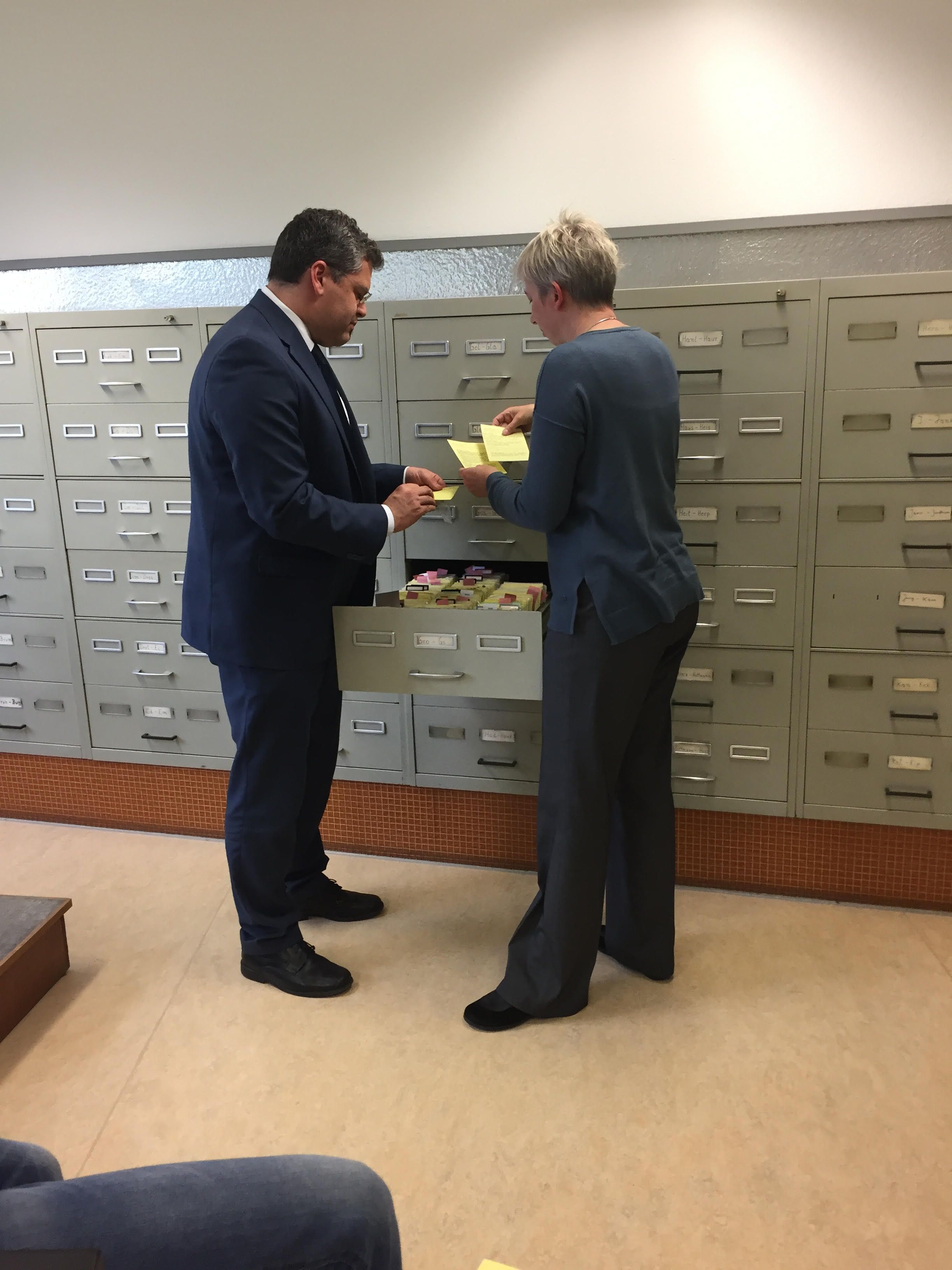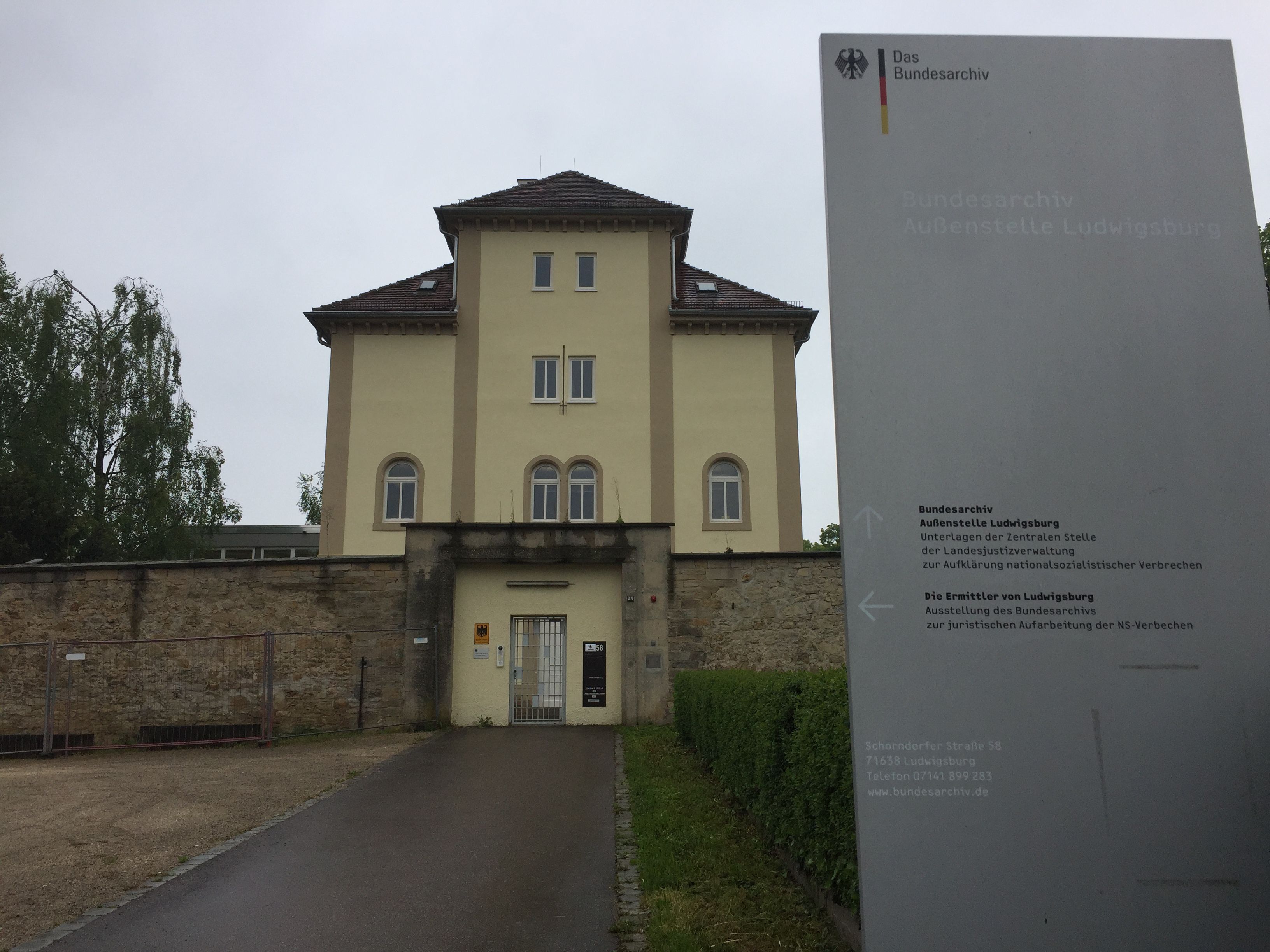Investigators from Germany's Central Office for the Investigation of National Socialist Crimes comb through ship landing records at Argentina's Dirección Nacional de Migraciones, the nation's central immigration authority and primary port of entry, looking for German immigrants who may have been trying to escape post-war justice in Europe. The records are often tattered, damaged, and torn, their withering pages exposed to the humid Buenos Aires air. Using only pencil and paper, investigators make note of each German arrival who fits certain demographic characteristics and could conceivably have served the Nazi regime.
Jens Rommel, chief of the Central Office for the Investigation of National Socialist Crimes, sorts through some of the 1,727,298 index cards that make up his office's archive of every name, place, and event having to do with World War II. The archive is the most comprehensive record of perpetrators and crimes committed during the war and forms the backbone of the Central Office's investigations. It is stored behind a steel door in the basement of the Ludwigsburg headquarters, which was once a Nazi prison. Another copy of the archive is stored at an undisclosed location.
The Central Office is housed in a former prison building, once used by the Nazis to detail political prisoners. Nestled into Ludwigsburg's 18th century city wall, it announces its current tenants only obliquely, and remains relatively unknown throughout Germany.


